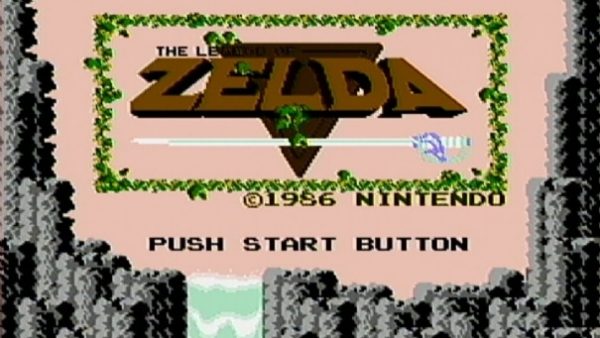The birth of a legend, 1986
Shigeru Miyamoto has never made a mystery to take inspiration from everyday life for the development of his games. The anecdot
e behind Zelda’s birth is more or less the same: “When I was a kid, I went hiking and found a lake. It was a surprise for me to find out by accident. When I was traveling for campaigns without a map, trying to find the right path, encountering amazing things along the way, I knew how to deal with such an adventure . “
For those who played the first The Legend of Zelda , it’s enough to go back to memory at the first moments of that title. Without a map defined, without a precise idea of where to go, the player is, as Link’s, exploring the world around him. A fairy-tale world,
populated by monstrous creatures, magicians, princesses, castles, castles, and all that comes from the imagination of a child. What Miyamoto wanted to convey was the feeling of being lost in the woods, a feeling that those who grew out of the city may perhaps relive in the memories of his childhood: those forests, those caves,
the lake that young Miyamoto had met as a young man are transformed into the world of that first The Legend of Zelda. The sliding doors of his home in Sonobe, which gave him the impression of being in a labyrinth, became dungeons. Creatures that exist only in fantasy come to life in the form of pixels, and the adventure that once was only imagined began to move magically
on the screen. This was what Miyamoto wanted to prove to the players: in what is perhaps a rouge in the master’s career, the intent was to bring the player back to his childhood, to the sensation of astonishment that only a child can try, marveling of the small things encountered in its perils.
Zelda’s subsequent chapters abandoned this goal in part. The path to follow became more defined by hand, losing the dissipation of the first chapter. This is not to be understood as a criticism of the quality of subsequent chapters: indeed, for the most part, subsequent chap
ters have aged much better than the first Zelda. This does not change, however, that Miyamoto’s original intention had been set aside. At least until Breath of the Wild arrives .
The same legend, thirty years later
That Breath of the Wild was a special chapter, you know it for a long time. More than in the past, Aonuma, the director who has tak
en the reins of the series, seemed to point to this title in particular to go to propose the “Zelda definitive” long pursuit. The long gameplay sessions displayed during the Treehouse, the tremendous attention given to the game during the various c
onferences became fully understandable only when we put our hands on the game: Breath of the Wild is a majestic title that deserves everything the time that Nintendo has devoted to, both in development and advertising.
As I said, however, I do not want to talk about the quality of Breath of the Wild , or rather, not only. The review of our Buddybar seems more than enough. I must admit that when he told me how much he liked the new Zelda, I myself struggled to believe him. Then, though, I also had the game, and I found myself sharing in everything and for all her opinion. The Legend of Zelda: The Brea
th of the Wild is the Zelda that everyone has been waiting for for years. Not only that, but also manages to be a lesson to be learned all over the gaming world in general. What I’m interested in, however, is to show how Breath of the Wild it is not only the top quality, but also the realization of what was Miyamoto’s original intent.
Aonuma had said that the first Zelda would be a source of inspiration. He had said that we could move freely, choosing us how to face the adventure. Such a reinvention of the foundations of the series was both tempting and dangerous. Instead, Aonuma has been able to unite in Breath of the Wild all the Zelda series has learned in the past thirty years to the spirit of the first Zelda.
Now as then, the player is in a new place with little indication of where to go and what to do: the world is waiting for him, and he is just deciding how to explore it, how to live his adventure. Thanks to the technological breakthrough of these thirty years, the fairy tale is now even more real: the gaming world is in three dimensions, it is vast more than we could imagine, and is so alive that it almost looks like a documentary in a distant, true country than the one around us.
At the same time, however, Breath of the Wild maintains the tradition: nothing is thrown into the wind, and this is why the player, like Link, is in a place that is so unknown but also known. Because in the game we look at family places, places we have visited in the past and that time has become almost unrecognizable. Their presence manages to unite the taste of discovery to that of memory, a perfect sum of those who were these (first) thirty years of Zelda.

